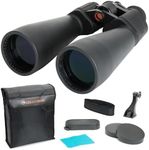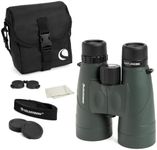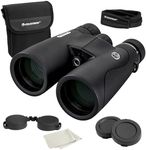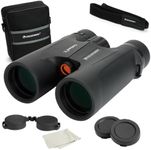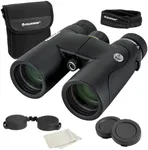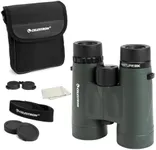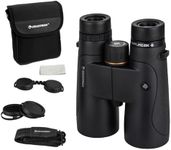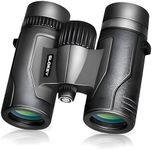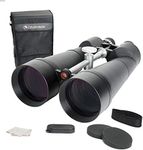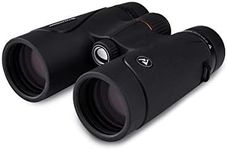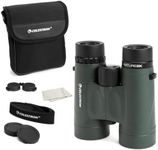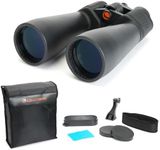Buying Guide for the Best Celestron Binoculars
Choosing the right binoculars can greatly enhance your outdoor experiences, whether you're bird watching, stargazing, or attending a sports event. The key is to understand the specifications that matter most for your intended use and how they affect performance. Binoculars come in various sizes and configurations, and knowing what each specification means will help you make an informed decision.MagnificationMagnification indicates how much closer the object will appear compared to the naked eye. It's usually represented as a number followed by 'x', such as 8x or 10x. Higher magnification means you can see further, but it also narrows the field of view and can make the image less stable. For general use, 8x to 10x is ideal, providing a good balance between detail and stability. If you're bird watching or attending sports events, this range is suitable. For stargazing, you might want higher magnification, but be prepared to use a tripod for stability.
Objective Lens DiameterThe objective lens diameter, measured in millimeters, determines how much light the binoculars can gather. Larger diameters allow more light, resulting in brighter images, especially in low-light conditions. Common sizes range from 25mm to 50mm. If you're using binoculars in daylight, a smaller diameter like 25mm to 35mm is sufficient. For dusk or dawn activities, or stargazing, opt for larger diameters like 40mm to 50mm to ensure better visibility.
Field of ViewField of view refers to the width of the area visible through the binoculars at a specific distance, usually measured in feet at 1000 yards. A wider field of view allows you to see more of the scene without moving the binoculars, which is beneficial for tracking moving objects like birds or during sports events. If your primary use involves observing fast-moving subjects, choose binoculars with a wider field of view. For stationary objects or stargazing, a narrower field of view is acceptable.
Exit PupilExit pupil is the diameter of the light beam that exits the eyepiece, calculated by dividing the objective lens diameter by the magnification. It affects how bright the image appears and is crucial in low-light conditions. A larger exit pupil means brighter images, which is important for night-time use. For daytime activities, an exit pupil of 2-3mm is adequate. For low-light conditions, aim for 4-5mm to ensure better image brightness.
Prism TypeBinoculars use prisms to correct the orientation of the image. The two main types are Porro and Roof prisms. Porro prisms are generally bulkier but offer better depth perception and wider field of view. Roof prisms are more compact and durable, making them ideal for outdoor activities where portability is key. If you prioritize image quality and don't mind the size, Porro prisms are a good choice. For compactness and ease of carrying, Roof prisms are preferable.
Eye ReliefEye relief is the distance from the eyepiece to your eye where you can still see the full field of view. It's particularly important for eyeglass wearers, as longer eye relief allows comfortable viewing without removing glasses. Typically, eye relief ranges from 10mm to 20mm. If you wear glasses, look for binoculars with at least 15mm of eye relief to ensure a comfortable viewing experience. If you don't wear glasses, shorter eye relief is generally sufficient.
